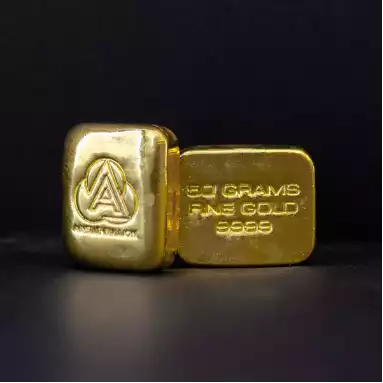Where does Gold come from?
News
|
Posted 26/08/2021
|
7029
Speaking to a customer yesterday morning, I was asked “I know you have gold, and I’m sure it’s pure, but is it real gold?” I started launching into the regular spiel about our Precious Metals Verification Machine before he interjected to ask, “I mean, is it manufactured? Where does it actually come from?” So he was, in essence, asking about the genesis story of the yellow metal.
I’d previously thought gold to be found at the end of a rainbow. You just had to negotiate with an errant leprechaun if you wanted to get your hands on it. To try to assure my customer, we discussed the mining process and the ten years’ worth of geological surveys, planning permits, engineering plans, financing and determination that it takes to get a mine to ‘first pour’. We agreed that given the difficulty of getting it out of the ground, it's very convenient to be able to jump online or walk into Ainslie and buy the finished product for a fraction above the spot price. But admittedly, even that extended backstory of where the 50g piece came from, didn’t get to the heart of his question: how did the gold find itself in the ground in the first place? So, I decided to investigate further.

Gold, the indestructible metal, is created inside massive stars when they explode into a supernova. The fragments are dispersed and travel through space as asteroids, with major deposits on the earth’s surface hitting relatively early on in the lonely planet’s long history. It was previously thought that gold formed on Earth like diamonds and many other gems and minerals. We have a clear understanding of the formation processes that other precious metals like Silver, Platinum and Palladium undergo, but we’ve never cracked the code on Gold. While there is some speculation as to whether gold may appear on earth through other means, the asteroids billions of years ago are the only known origin identified to date. It makes one wonder, whether or not there is a gigantic gold nugget flying through space right now with our Earth in its crosshairs.
De Beers announced earlier this week that they are now able to produce “lab-grown” 2 karat diamonds - so my bullion client certainly wasn’t way off the deep end in asking “Is Ainslie’s gold different to what I’d find in a South African Krugerrand?” Alchemists have been trying to manufacture gold since the Middle Ages without any success. To date, the only person to have made any significant money from the trade was Paul Coelho with the best seller “The Alchemist”. Despite all the advances in the modern era, we are still stuck with what’s stuck in the ground. Looking forward, it’s unlikely that modern science will be able to do much headway - it’s not as if there has been a lack of financial incentive to motivate research.
There have been various plans to identify other planets that have high gold grades, but the costs of interplanetary travels are, frankly, astronomical. So there we have it, the supply is limited. What’s more, it seems to be one of the only materials on the planet that not only can’t be manufactured, but isn’t produced at all by the natural elements. The origin of gold on Earth, and it’s incredible properties of not rusting, tarnishing, evaporating (easily) make it truly out of this world.